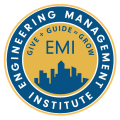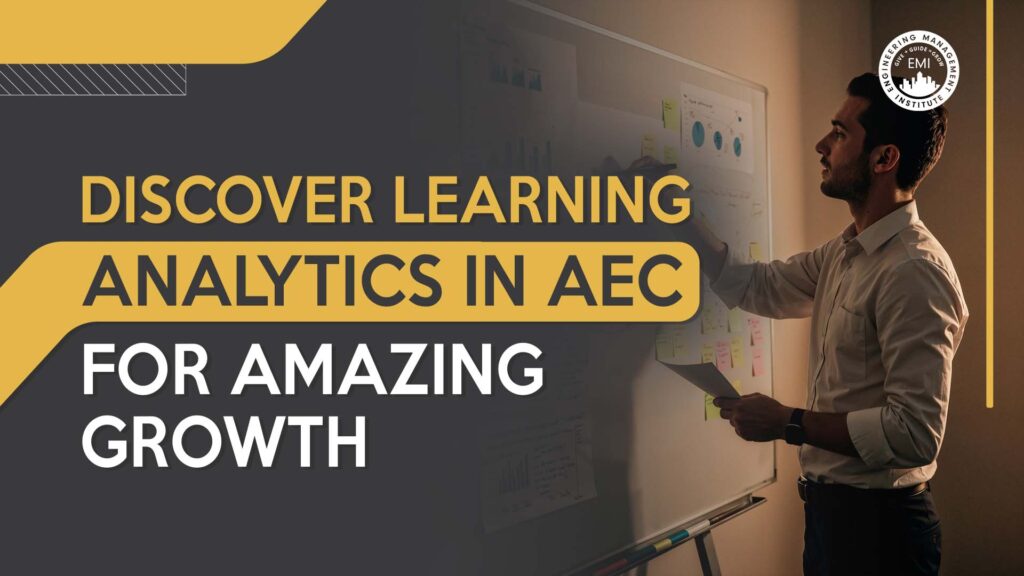Imagine being able to peek behind the curtain of your AEC training programs, gaining a clear understanding of what’s working and what’s not. That’s the power of learning analytics in AEC (LA). In the Architecture, Engineering, and Construction (AEC) industry, where precision and efficiency are paramount, leveraging analytics transforms data into actionable insights that can dramatically improve training performance data and learning outcomes and organizational efficiency.
learning analytics in AEC involves gathering data for data-driven learning on learners and their environments, then using that information to enhance both experiences and results. Think of it as turning numbers into knowledge—and that knowledge into action.
Key Components of Learning Analytics
1. Data Collection
The journey begins with the right data. Insights can be gleaned from several sources, including:
- Learning Management Systems (LMS)
- Online assessments and quizzes
- Attendance and participation records
- Feedback surveys
- Social learning tools and platforms
2. Data Analysis
Once data is collected, it needs to be analyzed to extract meaningful insights. Here are several methods used in the analysis of learner data:
- Descriptive Statistics: understanding what’s happening at present.
- Predictive Modeling: anticipating future trends and outcomes.
- Network Analysis: exploring how learners interact and connect with one another.
- Sentiment Analysis: gauging learner sentiments and feelings about training programs.
3. Reporting and Visualization
Data becomes valuable only when effectively communicated. This involves:
- Dashboards for real-time overviews
- Detailed reports for in-depth analysis
- Infographics that make insights accessible and engaging
Benefits of Learning Analytics in AEC
Personalized Learning
Learning Analytics in AEC tailors content to individual needs, highlights knowledge gaps, and provides just-in-time support; ensuring no two learners follow the same path and enabling every learner to reach their potential.
Improved Instruction
Educators and trainers can evaluate what works and what doesn’t, leading to better curriculum decisions and more impactful teaching methods that improve training outcomes.
Enhanced Learner Engagement
By monitoring progress and delivering timely feedback, learning analytics in AEC keeps learners motivated and identifies at-risk individuals early, allowing for quick intervention.
Smarter Resource Allocation
Organizations can allocate resources more effectively, minimizing waste and maximizing the efficiency of construction industry training and engineering workforce development.
Challenges in Implementing Learning Analytics in AEC
While learning analytics in AEC can drive significant impact, several challenges must be addressed:
- Data Privacy and Security: Organizations must ethically manage learner data and ensure protection from unauthorized access.
- Data Quality and Integration: Accurate and consistent data is crucial; however, integrating data from various systems can be complex.
- Making Data Actionable: Gathering insights is only part of the process; educators and leaders require support to turn data into effective strategies.
Future Trends in Learning Analytics in AEC
Learning analytics in AEC is evolving rapidly, driven by several key trends:
- AI and Machine Learning: These technologies automate analysis and can identify underlying patterns, enhancing learning personalization.
- Big Data and Cloud-Based Solutions: The power of cloud computing allows for real-time, scalable learning analytics that can manage vast amounts of data.
- Ethical Frameworks: As analytics become more prominent, a focus on ethical standards—emphasizing transparency, fairness, and accountability in the use of learning data—is increasingly essential.
Conclusion
Learning Analytics is AEC is not just a buzzword; it’s a transformative tool for organizations in the AEC sector. By leveraging data effectively, organizations can make more informed decisions, create better personalized learning solutions, and achieve stronger outcomes. However, to unlock its full potential, attention must be paid to privacy, data quality, and the importance of actionable strategies.
Take Action: Where to Start
To embark on your Learning Analytics in AEC journey, consider the following steps:
- Identify key data sources within your learning ecosystem.
- Research tools and platforms that offer robust LMS analytics capabilities.
- Develop a roadmap for collecting and analyzing data.
- Provide training to help your team interpret and apply analytics.
- Continuously refine learning strategies based on the insights revealed.
By taking these steps, you can position your AEC organization at the forefront of learning and development, leveraging analytics to foster growth and success.
References
- Solar Research – What is Learning Analytics?
- EDUCAUSE – Teaching and Learning Program
- HCM Deck – Learning Analytics
- Valamis – Learning Analytics
- Learning Light – Learning Analytics
- WaterBear Learning – Learning Analytics
- LinkedIn – Learner Analytics
- Disprz – LMS Analytics Reporting Guide
About the Author:

Most recently, during his time working for the public sector, he has taken the role of Public Works Operations Manager. There he led quite a few public infrastructure rehabilitation projects and implemented new asset management technologies at a very young age. It is here that the passion for “fixing what’s broken” has developed.
Please leave your comments, feedback or questions in the section below.






